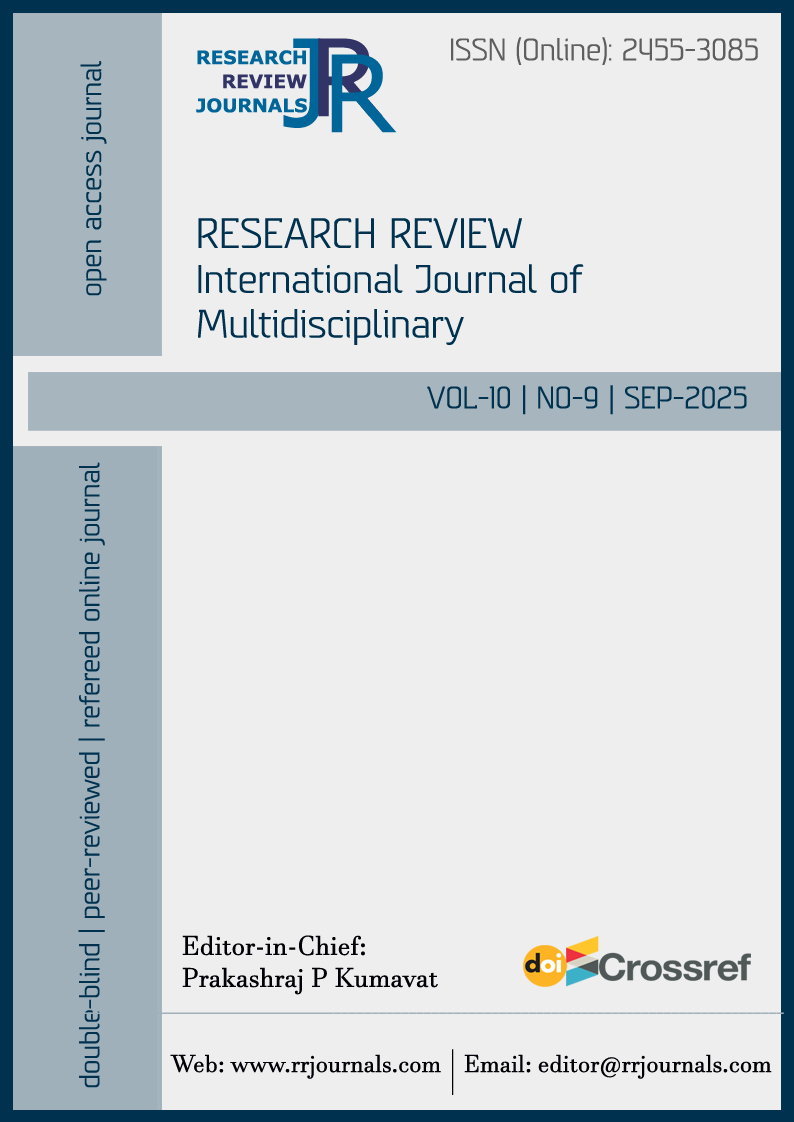Time to Materialize Dental Digitization for Disaster Victim Identification in India
DOI:
https://doi.org/10.31305/rrijm.2025.v10.n9.015Keywords:
Artificial intelligence, dental digitization, disaster victim identification, forensic odontologists, Indian dental softwareAbstract
This article highlights the immense potential of developing and utilizing a robust digital dental software in India. Once implemented, such software can revolutionize disaster victim identification, offering unparalleled benefits in terms of accuracy and efficiency. The occurrence of mass disasters in our country has surged in recent times, highlighting the urgent need for advanced identification methods. Dental evidence, known for its high reliability, is a crucial tool for the comparative and reconstructive identification of individuals. In the era of digital transformation, forensics is also evolving. The digital dental software used by forensic odontologists in various countries has been a game-changer, enabling them to swiftly and accurately identify victims of mass disasters and missing persons. Given this situation, digitizing dental records and developing robust dental software for India have become essential. We require dental software that can input, store, analyze, compare, and generate valuable output, potentially aiding government organizations to resolve forensic cases more efficiently than ever before. The integration of the dental biometric tool and other dental features in the Indian dental software, along with its combination with the leading artificial intelligence tool, can significantly enhance the creation of biological profiles, including individual identity, age estimation, gender determination, facial reconstruction, and bite mark analysis. This integration will assist forensic odontologists in meticulously identifying individuals more accurately.
References
Shamim T, Ipe Varughese V, Shameena PM, Sudha S. Forensic odontology: a new perspective. Medicolegal Update 2006; 6:1-4.
Adams C, Carabott R, Evans S. Disaster victim identification. Forensic Odontology: An Essential Guide, First Edition. Wiley-Blackwell, Ltd; 2014.
Solheim T, Lorentsen M, Sundnes PK, Bang G, Bremnes L. The "Scandinavian Star" ferry disaster 1990—a challenge to forensic odontology. Int J Legal Med 1992;104: 339–345. PMID: 1515361
Schuller-Götzburg P, Suchanek J. Forensic odontologists successfully identify tsunami victims in Phuket, Thailand. Forensic Sci Int 2007;171: 204–207.
Hinchliffe J. Forensic odontology, part 3. The Australian bushfires—Victoria state, February 2009. Br Dent J 2011;210: 317–321.
Bush M, Miller R. The crash of Colgan Air flight 3407: advanced techniques in victim identification. J Am Dent Assoc 2011;142: 1352–1356.
Hinchliffe J. Forensic odontology, part 2. Major disasters. Br Dent J 2011;210: 269–274.
Berman GM, Chrz B, Nawrocki LA, Hermsen KP, Miller RG, Weems RA. Disaster victim identification, manual of forensic odontology. In: Senn DR, Weems R, editors. International Standard Book. 5th ed., Ch. 6. New York: CRC Press, Taylor and Francis Group; 2013. p. 186-189.
Thali MJ, Yen K, Schweitzer W, Vock P, Boesch C, Ozdoba C, et al. Virtopsy, a new imaging horizon in forensic pathology: Virtual autopsy by postmortem multislice computed tomography (MSCT) and magnetic resonance imaging (MRI) a feasibility study. J Forensic Sci 2003; 48:386-403.
English WR, Robison SF, Summitt JB, Oesterle LJ, Brannon RB, Morlang WM. Individuality of human palatal rugae. J Forensic Sci 1988; 33:718 26.
Sadler TW. Langman’s Medical Embryology. Baltimore: Williams and Wilkins 1990; p. 316 20.
Shetty D, Juneja A, Jain A, Khanna KS, Pruthi N, Gupta A, et al. Assessment of palatal rugae pattern and their reproducibility for application in forensic analysis. J Forensic Dent Sci 2013; 5:106-9.
Manjunath K, Sriram G, Saraswathi TR, Sivapathasundaram B. Enamel rod end patterns: A preliminary study using acetate peel technique and automated biometrics. J Forens Odontol 2008; 1:33‑6.
Abdul NS. Ameloglyphics: A Forensic Tool for Human Identification. J Pharm Bioallied Sci 2023; Jul15(Suppl 1): S18-S21.
Beena VT, Mohammed R, Paul S, Stephen MM, Nair C, Mohan AP. Ameloglyphics: The tooth signature. Oral Maxillofac Pathol J 2018; 9:70–5.
Juneja M, Juneja S, Rakesh N et al. Ameloglyphics: A possible forensic tool for person identification following high temperature and acid exposure. J Forensic Dent Sci 2016;8: 28–31.
Manjunath K, Sivapathasundharam B, Saraswathi TR. Analysis of enamel rod end patterns on tooth surface for personal identification —ameloglyphics. J Forensic Sci 2012; 57:789–93.
Christopher V, Murthy S, Ashwinirani SR, Prasad K, Girish S, Vinit SP. Can dead man tooth do tell tales? Tooth prints in forensic identification. J Forensic Dent Sci 2017; 9:47.
Turner CI, Nicol CR, Scott G. Scoring procedures for key morphological traits of the permanent dentition. Advances in dental anthropology 1991;13-31.
Dineja R. DNA Sampling Methods and Extraction Techniques in Forensic Odontogenetics - A Review. Journal of Indian Academy of Forensic Medicine 2023;45(4),434-437.
Bewes J, Low A, Morphett A, Pate FD, Henneberg M. Artificial intelligence for sex determination of skeletal remains: Application of a deep learning artificial neural network to human skulls. J Forensic Leg Med 2019; 62:40-43.
Mahasantipiya PM, Yeesarapat U, Suriyadet T, Sricharoen J, Dumrongwanich A, Thaiupathump T. Bite mark identification using neural networks: A preliminary study. IMECS 2011; pp- 65-68.
T. Smitha. Artificial Intelligence in Forensic Odontology. Journal of Forensic Dental Sciences 2023;01-02.
Ali HJ, Choudhari M, Hande A. Scope and Relevance of Forensic Odontology in India - A Review. Journal of Indian Academy of Forensic Medicine 2022;44(3),75-77.
Mamta, Mondal PR. Importance of Diversity in Dental Pattern for Personal Identification: A Review. Journal of Indian Academy of Forensic Medicine 2023;45(3),305-312.
Downloads
Published
How to Cite
Issue
Section
License

This work is licensed under a Creative Commons Attribution-NonCommercial 4.0 International License.
This is an open access article under the CC BY-NC-ND license Creative Commons Attribution-Noncommercial 4.0 International (CC BY-NC 4.0).



